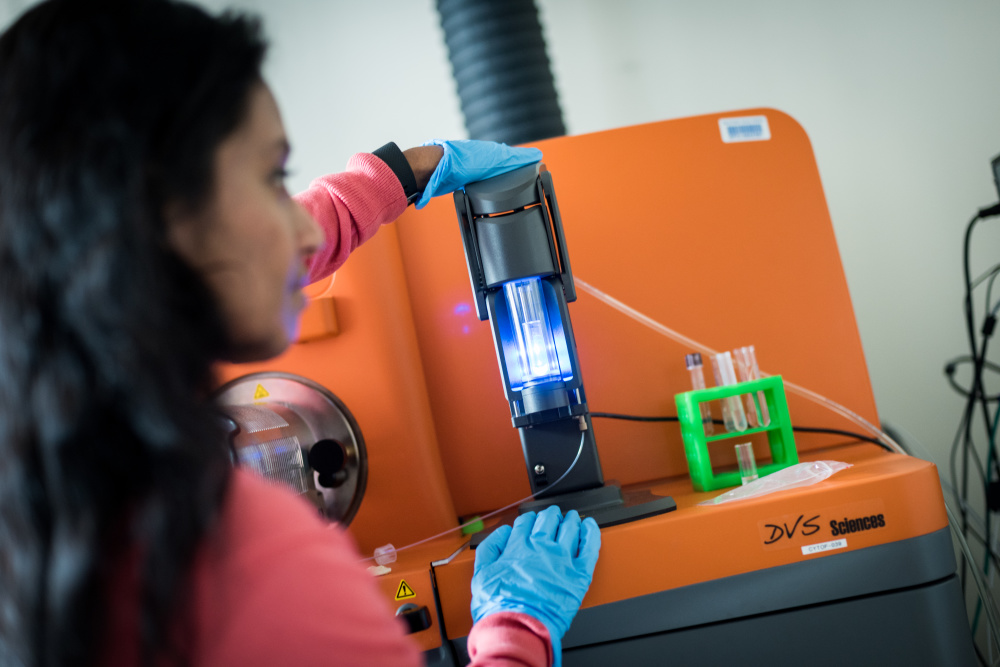Treatment of blood-related, or hematologic, cancers is seizing on insights into the basic genetic wiring of cancer cells and the body’s system for finding and attacking those cells. Research presentations at the annual American Society of Hematology (ASH) meeting in December gave evidence of how broad, and rapid, the progress is. Targeted therapies, new combinations of therapies, and treatments that enhance the immune system’s innate cancer-fighting ability are producing solid results in clinical research involving patients who may be resistant to numerous other treatments. We polled several Dana-Farber physician-scientists for their take on some of the most exciting findings announced at ASH.

- Among patients who underwent a stem cell transplant for myelodysplastic syndrome (MDS) – a family of conditions in which bone marrow doesn’t produce enough healthy blood cells – outcomes after stem cell transplantation depend on the mutation profile of their disease. In a study led by Dana-Farber researchers, genetic analysis of blood samples from more than 1,500 patients whose blood cells carry mutations in the gene TP53 are less likely to benefit from stem cell transplant than patients without TP53. In MDS patients without TP53 mutations, those with abnormalities in one of eight “RAS pathway” genes have improved outcome after more intensive pre-transplant conditioning.
- Another study led by Dana-Farber researchers sought to determine how CHIP – a condition in which patients’ blood cells carry acquired mutations associated with blood cancers, but the patients themselves are healthy – affects patient outcomes after an autologous stem cell transplant for non-Hodgkin lymphoma. By analyzing blood samples from more than 400 patients, the researchers found that about 30 percent had CHIP, and that those patients had an increased risk of therapy-related myeloid neoplasms and inferior overall survival.
- In another study, Dana-Farber scientists found that when donor stem cells carrying CHIP abnormalities are used in a donor transplant, the abnormalities often remain detectable in the recipient. Although the full implications of this phenomenon aren’t known, researchers plan to study it more broadly to determine how frequently CHIP is transferred from donor to recipient, and how this affects clinical outcomes in transplant recipients.
- A treatment known as anti-T lymphocyte globulin (ATLG), in combination with other drugs, reduced the risk of graft-versus-host disease in patients undergoing a donor stem cell transplant. However, this group of patients had a lower overall survival rate than transplant patients who didn’t receive ATLG, according to a phase 3 trial led by Dana-Farber researchers. The negative impact occurred mainly in patients who had received a certain conditioning regimen prior to transplant.
- In a phase 1 clinical trial, the targeted drug gilteritinib generated prolonged beneficial responses in many patients with relapsed, treatment-resistant AML that carried a mutation in the FLT3 gene, researchers at the University of Pennsylvania reported. The survival rate in these patients was better than would have been expected with standard therapy.
- The targeted agent venetoclax combined with low doses of the drug cytarabine produced remissions in 70 percent of the elderly patients with AML participating in a phase 2 clinical trial led by Australian scientists. The patients were deemed ineligible for intensive chemotherapy because of their age.
- In a trial involving older patients with untreated secondary AML, CPX-351 – an agent that combines the chemotherapy drugs cytarabine and daunorubicin at a 5:1 ratio – produced a longer median survival than did the standard treatment of the drugs in a 7:3 ratio.
Learn More:
Chronic Myelogenous Leukemia (CML)
- A compound named ABL001, designed to block a key site in the abnormal cell protein BCR-ABL, produced strong responses in a phase 1 trial involving patients with CML that failed to succumb to previous targeted therapies. The overwhelming majority of patients had a hematologic response – normalized white blood counts; and 75 percent had a cytogenic response – involving the bone marrow, not just the circulating blood. Researchers are beginning to see early evidence of deep responses including improvements in the disease at the “molecular” level.
- Investigators reported on the first trial to evaluate patients with CML who had switched from the drug imatinib to nivolumab and remained in complete remission after stopping nivolumab. The researchers found that among patients who had a remission after making the switch, 58 percent remained in remission 48 weeks after stopping treatment.
Acute Lymphocytic Leukemia (ALL)
- A therapy consisting of immune system T cells engineered to target a particular protein, or antigen, on the surface of leukemia cells produced remissions in children and young adults with relapsed, treatment-resistant B-cell ALL in a pilot study. Of the 30 children and young adults who participated in this study of “CAR” T cell therapy, 87 percent had a complete response – a remission of abnormal B cells – after one month. Further study will be needed to determine the staying power of the treatment, researchers said.
- In a Dana-Farber-led trial of the drug combination elotuzumab, lenalidomide, and dexamethasone in patients with “smoldering” multiple myeloma at high risk of developing active disease, 71 percent responded to the regimen, and none had developed active myeloma in the course of the study to date. This study and others involving patients with smoldering disease may eventually lead to early treatment intervention in individuals at high risk to progress to active disease, thus preventing symptoms and organ damage related to myeloma.

Multiple myeloma cells illustration - A study co-led by the Dana-Farber team evaluated new approaches to administration of a triad of drugs that constitute standard therapy for patients with newly diagnosed multiple myeloma and produced encouraging results in a phase 2 clinical trial. In the trial, patients received the drug bortezomib subcutaneously, along with the drugs lenalidomide and dexamethasone. After four cycles of the therapy, 98 percent responded to the regimen, and the rate of peripheral neuropathy, an important side effect related to the regimen, was lower than previous studies in which bortezomib was administered intravenously.
- In a phase 1 trial, the drug venetoclax produced responses in 21 percent of patients with relapsed myeloma that had become resistant to multiple previous treatments. Importantly, the response to venetoclax among patients whose disease harbors a translocation between chromosomes 11 and 14 was 40 percent, including 14 percent who had a complete response. Side effects associated with the drug were manageable, with only a few cases of high-grade toxicity.
- A substantial percentage of patients with myeloma who had become resistant to previous therapies benefited from treatment with the novel compound selinexor in combination with low-dose dexamethasone, a phase 2 trial. Of the 78 patients evaluated in the trial, 21 percent responded to the regimen. It is the first report involving patients who were eligible for study by virtue of being resistant to five agents commonly used in the treatment of myeloma – lenalidomide, pomalidomide, bortezomib, carfilzomib, and antibody agents such as daratumumab and isatuximab.

- Young patients who had undergone an autologous stem cell transplant for mantle cell lymphoma often survived longer without a recurrence of the disease and lived longer overall when treated with the drug rituximab as maintenance therapy, a phase 3 trial. Four years after transplant, 82 percent of patients treated with rituximab were alive with no recurrence of the disease, compared to 65 percent of those who didn’t receive rituximab. Overall, 89 percent of patients in the rituximab group were alive after four years, compared to 81 percent in the other group.
- In patients with follicular lymphoma, the drug obinutuzumab and chemotherapy produced better progression-free survival – the period in which disease is held in check – than rituximab and chemotherapy, a phase 3 study. Future research will examine whether this translates into longer overall survival.
- In the first large trial of CAR T-cells targeting the CD19 antigen in patients with aggressive, treatment-resistant non-Hodgkin lymphoma, the therapy generated a response in 79 percent of participating patients, and a complete response – no detectable evidence of cancer – in 52 percent. At three months, 39 percent of patients were in complete remission.
Learn more about hematologic oncology research and treatment at Dana-Farber.


My wife was recently diagnosed with pancreatic cancer. Currently going though chemotherapy at MGH. Has there been any advances in treatment for this cancer?
Hi Guy:
Thank you for your comment. We are so sorry to hear of your wife’s cancer diagnosis. There is information on our current pancreatic treatment and research available in this recent blog post: http://blog.dana-farber.org/insight/2016/11/can-immunotherapy-help-patients-with-pancreatic-cancer/
You can also view our open clinical trials for pancreatic cancer, which may be of interest to you and your wife: http://www.dana-farber.org/Research/Clinical-Trials/Clinical-Trials-by-Diagnosis.aspx?did=19
Should you be interested in coming for a second opinion, you can call 877-442-3324.
We hope this is helpful and wish you all the best.
– DFCI